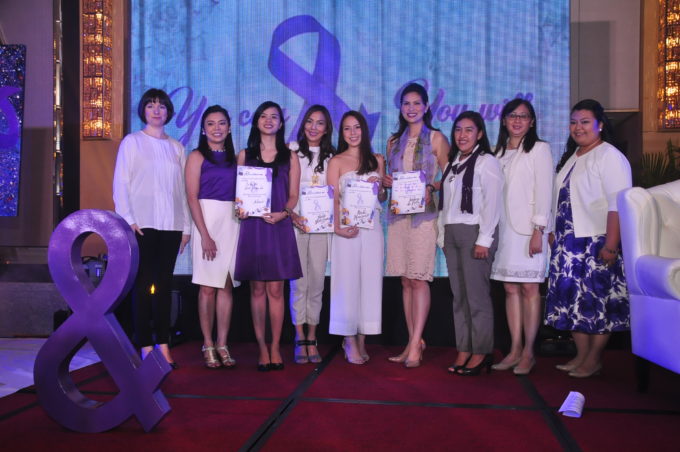May was Cervical Cancer Awareness Month, I was supposed to attend an event regarding cervical cancer and its prevention. I wanted to learn more about this disease and also to share to you mommies how we can protect ourselves against cervical cancer. I am not getting any younger that’s why it’s really important to pay attention to my well-being. Sabi nga ng TV program, Happy Wife, Happy Life, so pag Healthy Wife, Healthy Life din :). Seriously, for us to be able to take care of our husband and our kids, mommies should be in tip-top shape too.
One sad fact is that seven Filipino women die of cervical cancer every day. It is the second leading cause of cancer deaths among Filipinas. And you know what, cervical cancer puts every woman at risk, regardless of race, age, lifestyle or socio-economic status. Dr. Leah Manio, GSK Medical Affairs Manager, said that even the healthiest can be at risk.
What is Cervical Cancer?
Cervical cancer occurs when abnormal cells develop and spread in the cervix, the entrance between the vagina and the uterus. This is caused by persistent infection with the cancer causing human papillomavirus (HPV).
Who is at risk?
The incidence of cancer-causing HPV infection is actually highest at the young ages of 15-19. One is at a greater risk of cervical cancer if one had her first sexual intercourse at a young age; have given birth for multiple times; have or have had sexually transmitted diseases; have HIV or whose immune system is weakened; a smoker; long-term use of oral contraceptives for 5 years or more and those who rarely or have not yet had any pap smear.
The World Health Organization Strategic Advisory Group of Experts (WHO-SAGE) on Immunization reiterates the importance of getting young girls protected through HPV immunization before their first exposure to HPV (i.e. before sexual contact), as young as 9 years old.
For older women, the risk of persistent infection with cancer-causing HPV (which is necessary for cervical cancer to develop) increases with age, and is highest when a woman is over 66 years old. Thus, screening is recommended starting age 21 to detect cervical abnormalities that precede actual cervical cancer. Studies further show that vaccination remains to be beneficial for older women to prevent HPV infections.
Power Over Cervical Cancer
In commemoration of Cervical Cancer Awareness Month, research-based pharmaceutical company GlaxoSmithKline (GSK) furthers its advocacy to increase cervical cancer awareness efforts with the Power Over Cervical Cancer “You Can & You Will” campaign.
The campaign aims to encourage Filipinas to realize that they have the power to protect themselves and their dreams—simply by consulting their doctors and asking about ways to prevent cervical cancer.
An ounce of prevention is better than cure, and cheaper too! In the Philippines, it is estimated that the financial cost of preventing cervical cancer through screening and vaccination could be 20 times more affordable than the cost of treatment.
To know more about cervical cancer, visit the Power Over Cervical Cancer Page on Facebook (www.facebook.com/POCCPh) and the Pangarap Mo, Protektado page on Youtube (www.youtube.com/ProteksyonPortal) containing information and short films conveying how protecting oneself against vaccine-preventable diseases is one important step in the achievement of one’s dreams.


Leave a Reply